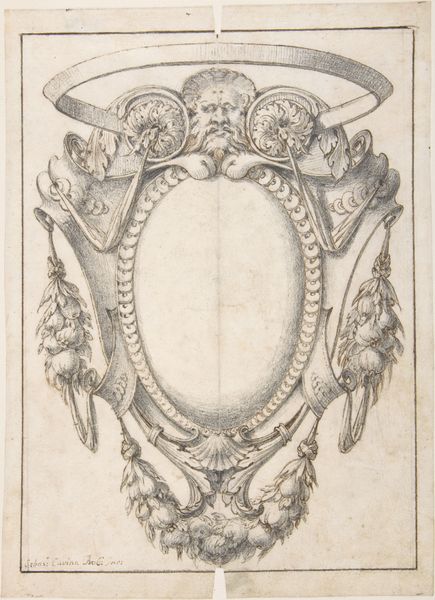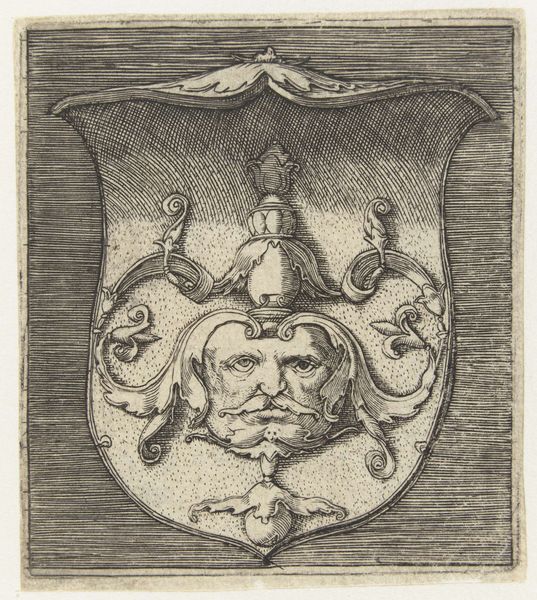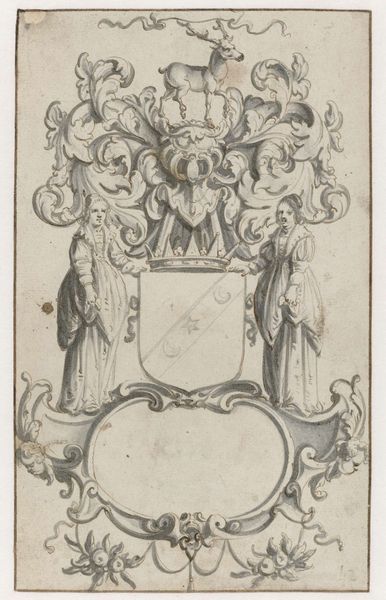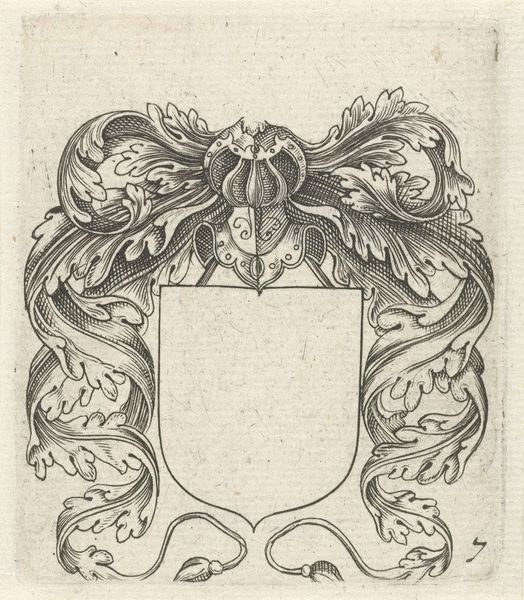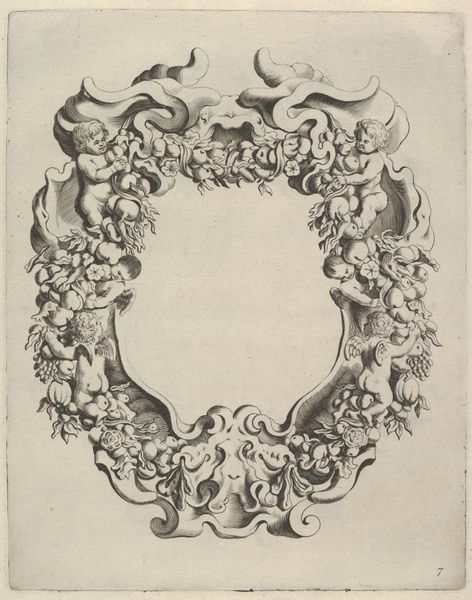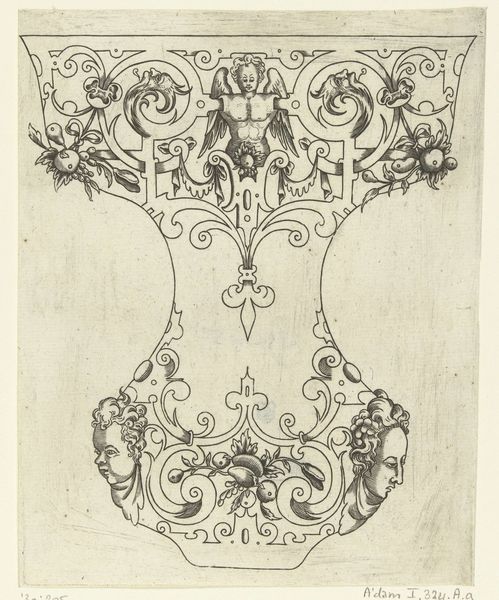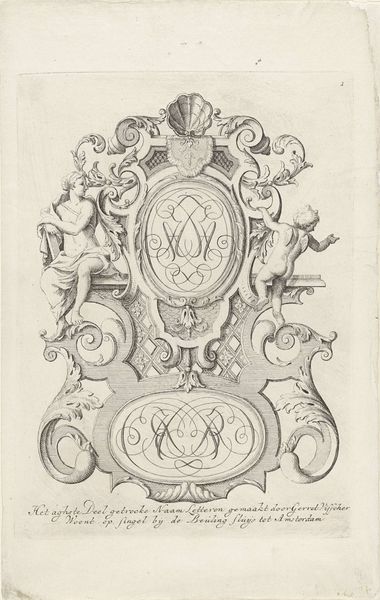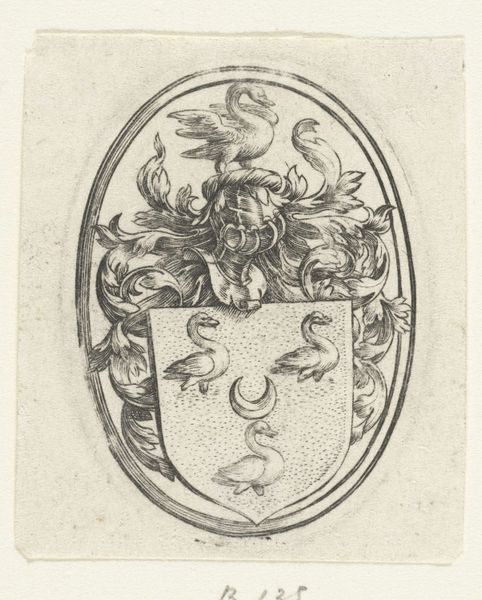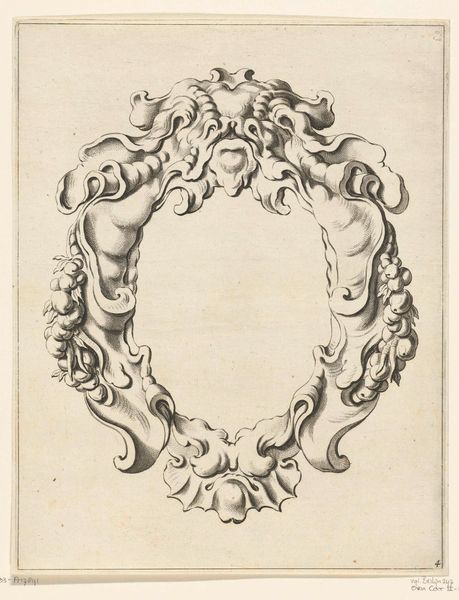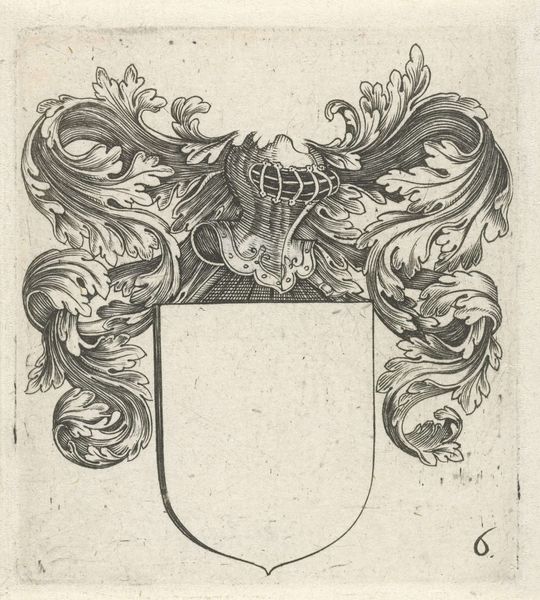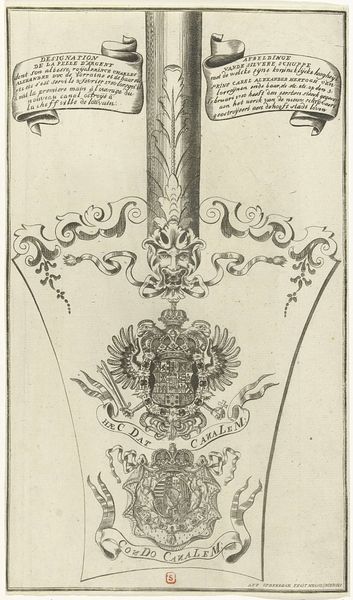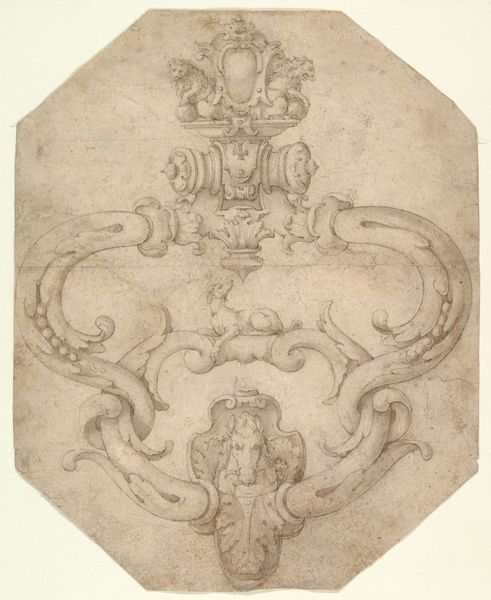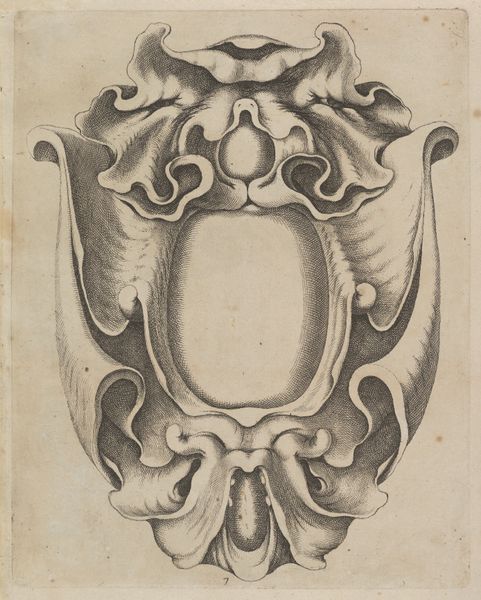
Design for a Cartouche with a Lion's Head and Nimbus 1732 - 1802
0:00
0:00
drawing, print, pencil
#
drawing
#
neoclacissism
# print
#
pencil drawing
#
pencil
Dimensions: 7 x 8- 7/16 in. (17.8 x 21.4 cm)
Copyright: Public Domain
Editor: Here we have Carlo Bianconi’s "Design for a Cartouche with a Lion's Head and Nimbus," a pencil drawing from the late 18th century. It's interesting how formal and rigid the basic shield shape is, contrasted with the wildness of the lion and the floral ornamentation. What do you see when you look at it? Curator: Oh, that lion! Doesn’t he look like he’s just told the world’s worst joke and is waiting for the laugh? But beyond his comedic timing, this cartouche whispers to us about the era of Neoclassicism, where artists and designers looked back to the glory of ancient Greece and Rome. It's a strange combination of power and humor. Where would you imagine this being used? Editor: Hmm, maybe on a building façade or a monument? Something grand. Curator: Precisely! These cartouches were meant to be imposing, carrying names, inscriptions, or coats of arms. But there's a playful subversion here; the artist has loosened the strict classical lines with natural, almost overflowing details. He's reminding us that even within rigid structures, life—and a sense of humor—finds a way to flourish. It's like a giggle in a very serious room. Editor: So it’s both reverent and… rebellious? I hadn’t quite seen that before. Curator: Exactly! It’s a balancing act. Art often thrives in those in-between spaces. I think it also shows that sometimes the best designs allow something living and imperfect to emerge within them. Editor: Well, that gives me a whole new perspective on Neoclassical art! Thanks!
Comments
No comments
Be the first to comment and join the conversation on the ultimate creative platform.
